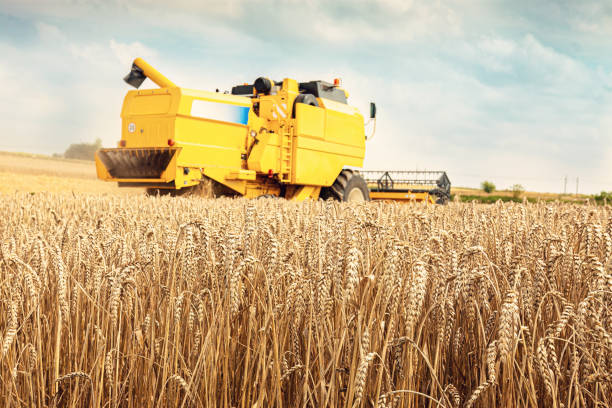Boosting Farm Profits From Corn, Soybean, and Wheat
Colorado farm loans can facilitate the maximization of farm income, an essential aspect of successful agricultural output. Corn, soybeans, and wheat are three of the most important staple crops for many farmers; therefore, understanding how to maximize revenues from these crops is critical for a farming enterprise to maintain profitability at its current level of output.
Colorado farm loans can provide the necessary finances and resources to farmers seeking techniques to boost profit margins throughout their whole product line. With the assistance of Colorado farm loans, you'll be able to take your agricultural enterprise to new heights by utilizing all the available instruments to improve productivity and profitability.
In this article, we will review the ten basic components farmers can take to maximize their profits from corn, soybeans, and wheat by discussing the strategies of using rotation and cover crops, the importance of soil health, optimal planting and harvesting strategies, selecting the appropriate varieties and hybrids, determining costs and yields, crop insurance, and knowing the markets.
Adopt Advanced Planting and Harvesting Techniques
The success of farming is contingent on farm profitability, and maximizing farm profitability is not a simple task. Timing the planting and harvesting of corn, soybeans, and wheat harvests becomes increasingly vital for maximizing farm income for farms that cultivate these crops.
Planting too early exposes the farm to the risk of diminished yields due to extreme weather conditions, while planting too late exposes the farm to pests and illnesses. As a result, growers must closely monitor weather forecasts and adjust planting and harvesting schedules accordingly for optimal results.
Farmers can increase their farm profitability by utilizing instruments such as drones and sensors to monitor crop health and discover potential production issues before they do irreparable harm. Implementing tactics that maximize farm profitability by leveraging resources such as technology can have lasting effects on farm earnings.
Implement Rotation and Cover Crops
By varying their fields with corn, soybean, and wheat among non-cash crops such as clover, alfalfa, and other cover crop kinds, rotation and cover cropping allow farmers to make efficient use of their resources. This practice promises numerous benefits for the farm, including improved soil health, increased organic matter in the soil, reduced weed problems, and enhanced nutrient uptake by cash crops as a result of rotation crops replenishing nutrients in the soil without the use of chemical fertilizers or pesticides.
When this method is applied, the farm also reaps long-term benefits; strengthening the soil's microbiome helps the farm overcome environmental stresses such as drought and flooding, hence increasing the overall output of cash crops. It should come as no surprise that agriculture experts propose a rotation and cover crop plan to farms seeking to maximize income from corn, soybean, and wheat.
Select the Best Varieties and Crosses
The selection of the cultivar or hybrid is a critical aspect in influencing the success of a crop. When choosing the optimal crop to cultivate, farmers must consider cash expenses, soil types, and climate. Planting enhanced cash crop varieties or hybrids can result in increased yields and more cost-effective cash expenses. This results in increased profit margins for cash crops such as corn, wheat, and soybeans. Whether or whether the cash crop yields are successful is primarily dependent on the careful analysis of the many aspects involved.

Consider Soil Health
Soil health should be a primary goal for all farmers, from planting to harvest, in order to ensure the success of agricultural operations. Corn, soybeans, and wheat can all benefit from effective soil management, which provides the crops with needed nutrients and assures robust output. Not only can good soil increase agricultural yields and income, but it also functions as a carbon sink to protect the farm from weather-related damage. Cover crops and green manures should be employed to add organic material and nutrients back into the soil, fertilizers should be used in the correct amounts, soils should be maintained moist without being over-irrigated, and little tillage should be practiced.
Improve Your Cost and Yield Calculations Using a Farm Income Statement
It takes more than farming the optimum crop to operate a prosperous farm business. Optimal crop management necessitates that farmers weigh income taxes, the cost of inputs such as fertilizers, herbicides, and seeds, and cash revenues pertinent to their selection of variety or hybrid. To account for their income tax, expenses of inputs, and cash receipts, farmers must be aware of the expected yield of the crop they have chosen. Through this knowledge, they are able to properly manage their crops and optimize revenues through well-informed judgments. In an environment where income taxes are regulated, crop management is the most important component for any farm that wants to remain profitable.
Examining Crop Insurance
Crop insurance is a vital tool for farmers since it safeguards the future of their crop growing enterprises. In the event of significant crop losses, crop insurance can give crucial financial assistance through crop insurance proceeds and assist in recovering seed, labor, and fertilizer expenses. In addition, crop insurance can provide relief from the interest costs associated with loans used to acquire seeds and other machinery or equipment. Ultimately, crop insurance protects farmers against natural disaster-related losses and preserves their enterprises' long-term viability.
Awareness of Markets
Understanding corn, soybean, and wheat markets is vital for optimizing income from these products. This includes having an understanding of global markets and crop prices. Farmers should also seek local marketplaces, which can offer more stable pricing and earnings. Last but not least, farmers should pay attention to production pricing, as this can assist them in determining when to begin and finish production cycles, thus providing them greater control over their profits.
Invest in Appropriate Farming Equipment and Assets
Investing in the proper equipment to cultivate corn, soybeans, and wheat may be essential for farmers seeking to maximize operational results. From specialized planting tools that enable better sowing of soil to agricultural software programs that provide precise insights into crop health, the technological solutions currently available can assist reduce operating costs while increasing yields. This ultimately enables farmers to maximize their seasonal harvests, assuring both short- and long-term profitability and sustainability.
Utilize Inventory and Transport
The utilization of storage and transportation is another important consideration for maximizing income from corn, soybeans, and wheat. Proper storage and shipping of these crops can prevent losses due to spoilage and damage while allowing farmers to hold onto their commodities for longer, allowing them to take advantage of better prices when they become available.

Utilize Conservation Programs to Enhance Farm Income Net
Regarding the performance of corn, soybean, and wheat producers, it is impossible to overstate the significance of soil and water conservation, subsidies to reduce resource costs, and research & development to adapt to climate change. These services enable farmers to improve their yields from their land while preserving the land's sustainability and the crops' worth. For instance, subsidies provide farmers with access to fertilizers and insecticides, enabling them to manage agricultural pests more efficiently.
Research on how farming techniques might benefit from climate change contributes to the resilience of farms in the face of ever-changing climatic conditions. Ultimately, these programs are essential for farmers around the world who seek to optimize their profits from maize, soybean, and wheat crops.
For farmers seeking to optimize revenues from corn, soybeans, and wheat, there are a number of crucial actions to take. Utilizing rotation and cover crops to maintain soil fertility while suppressing weeds and managing pests is essential to this process. In order to enhance production efficiency and save costs over the long term, it is also essential to check soil health on a regular basis.
Farmers can maximize profits by planting varieties and hybrids that match the potential of local markets, calculating costs and yields to estimate profitability, understanding market prospects, investing in proper storage and transportation systems, considering federal land conservation programs that provide government payments or cost sharing on land rental payment, and comprehending crop insurance.
Investing in the proper equipment can also be incredibly advantageous, as it not only reduces workload but also improves productivity. Farmers can realize substantial returns on their investments in corn, soybeans, and wheat if they follow the instructions suggested in this article.
If you're looking for more ideas about this topic, feel free to check this blog post from Farm Plus Financial: https://farmloans.com/general-farm-news/enhancing-farm-profit-from-corn-soybean-and-wheat/

